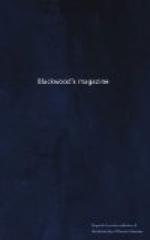The year 1588 forms an epoch in our musical history. An Italian merchant, who, by his mercantile connection with the Mediterranean, had opportunities of obtaining the newest and best compositions of his native country, had, for some years, been in the frequent habit of procuring the best singers of the day, to perform them, privately, at his house in London. This gentleman had at length the spirit and enterprise to publish a volume of Italian madrigals, entituled, “Musica Transalpina, Madrigales translated of four, five, and six parts, chosen out of divers excellent authors; with the first and second parts of La Virginella, made by Maister Byrd, upon two stanzas of Ariosto, and brought to speak English with the rest.” These pieces seem to have given birth to that passion for madrigals which was afterwards so prevalent, and thus became the models of contemporary musicians. The next composer of any note was Orlando Gibbons. He died at an early age, soon after the accession of Charles I., to whom he had been appointed organist. This master composed several madrigals, but, like his predecessors, he devoted himself principally to sacred composition. The secular productions of Tallis, Byrd, and Gibbons, together with those of contemporary composers of inferior note, are, for the most part, now forgotten; but the sacred music of these three masters still forms a part of every collection of church music. Canons and fugues were the favourite modes of that early period; vain substitutes for melody, rhythm, and correct accentuation, in which particulars music was then greatly deficient. The merits of the compositions of the Elizabethan age, vaunted by the lovers of antiquity as the golden age of English music, are thus summed up by Dr Burney: “It is, therefore, upon the church music, madrigals, and songs in parts, of our countrymen during the reign of Elizabeth, that we must rest their reputation; and these, in point of harmony and contrivance, the chief excellencies of such compositions, appear in nothing inferior to those of the best contemporary compositions of the Continent. Taste, rhythm, accent, and grace, must not be sought for in this kind of music; indeed, we might as well censure the ancient Greeks




